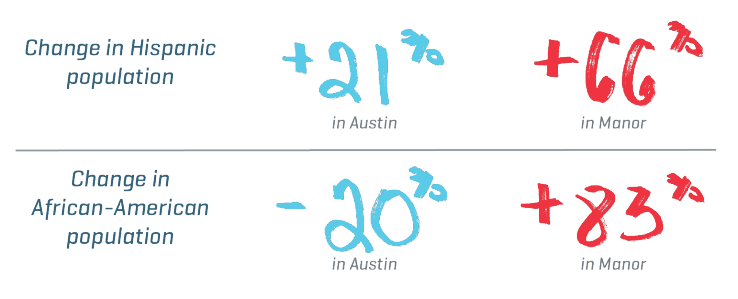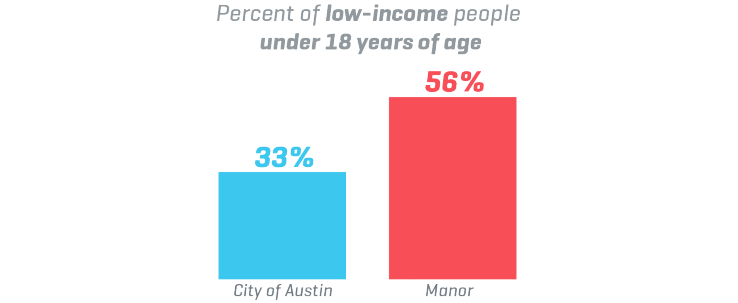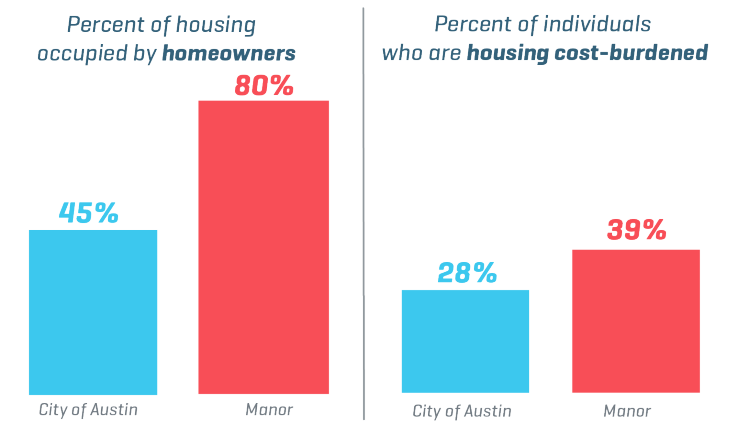As Austin continues to grow, certain corners of our city are seeing huge influxes – and the Manor community is one of them. Since the turn of the millennium, the population in Manor has tripled.
Manor residents are increasingly young and non-white
From 2000 to 2012 Manor saw particularly strong growth in its Hispanic and African-American populations, especially compared with the city as a whole.

Moreover, more than a third of Manor residents are under the age of 18 – a 30 percent growth from 2000 to 2012. Much like in St. John’s, many of these residents are low-income.

Manor residents are reaching out for help 13 percent more times this year than last
Manor is one of many suburban zip codes in Travis County that has increasingly been reaching out for help to our Navigation Center.
[Tweet “Calls for help to @uwatx from Manor in 2014 are up 13 percent over the first six months of 2013.”]
The changing populations are reflected in the types of calls that we receive: callers from Manor are more likely to report health needs or needs related to children than the average 2-1-1 caller. The types of needs being reported to 2-1-1 from the Manor community make sense when considering that the population of economically disadvantaged children at Manor high school alone has tripled along with the population.
Manor residents own their homes and are employed, but services are lacking and housing costs are a burden
Overall, our city has had a consistently low unemployment rate and it’s actually been even lower in the Manor community, at 6 percent in 2011 and 2012.
Manor residents are also more likely than other Austinites to be homeowners with an 80 percent homeownership rate in the community. Still, homeowners in Manor are significantly more likely to be cost-burdened than homeowners in Austin, meaning that they are more likely to be paying 30 percent or more of their income on housing costs.

Being housing burdened puts households at risk for not being able to meet their other basic needs and also increases their risk of foreclosure.
At the same time, services like child care and financial literacy programs which would help alleviate other cost-of-living burdens are traditionally located within the urban areas of our city, meaning they are often not available in areas like Manor. While out-of-school time programming is often offered through schools, cost becomes an issue and often these services are not affordable for families.
Unlike in St. John’s, Manor residents do not rely on public transportation – because there’s little to no public transportation available. This means transportation is one of the biggest barriers in the Manor community.
